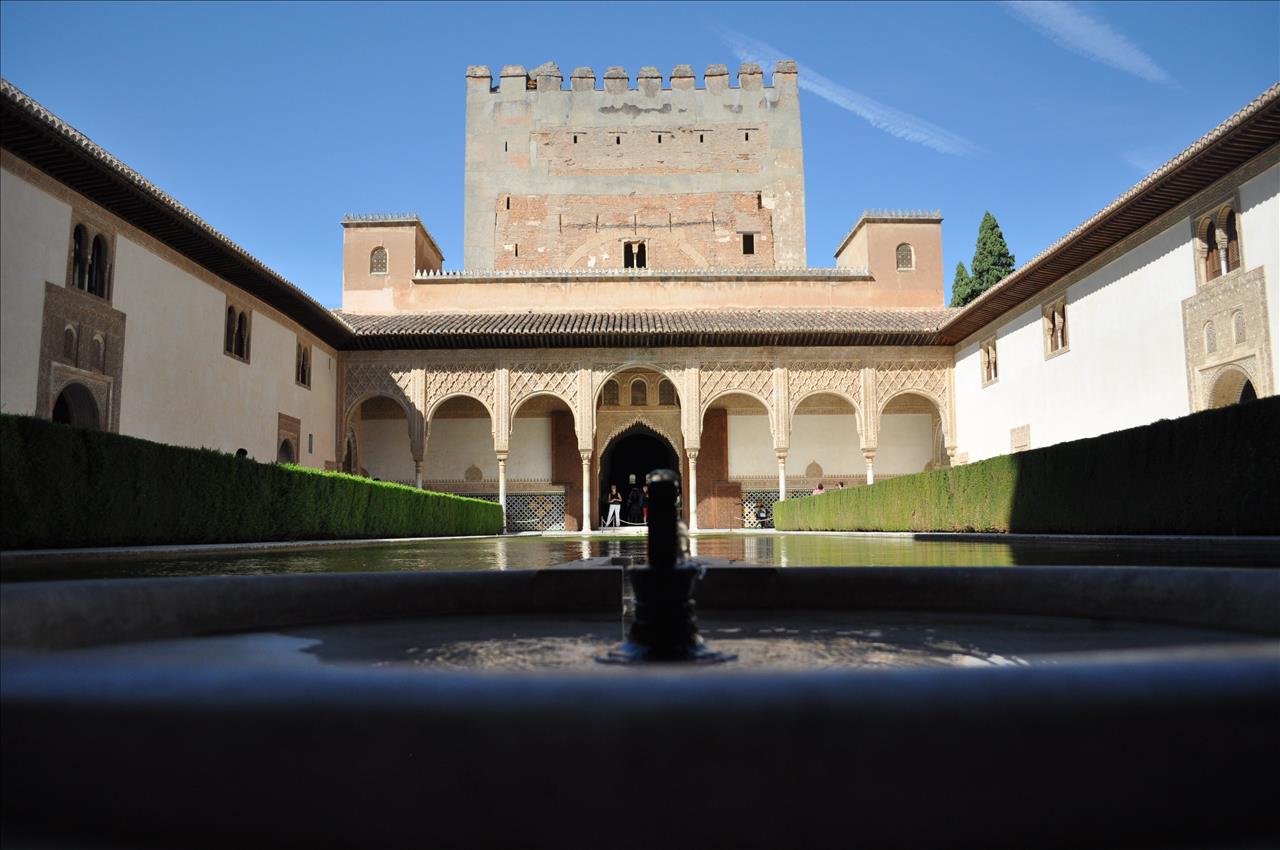There are many sights in Europe that take your breath away: the Coliseum, the snow-crested Alps, the beaches of Normandy, or the small villages of Cinque Terre set into the cliffs. You want to pinch yourself to make sure it’s real! There is another man-made marvel, which has remained somewhat off the main tourist trail, that may rival the Coliseum in its wonder: the Alhambra in Granada, Spain.
The Alhambra, or Al-Ḥamrā in Arabic (‘The Red One’, referencing its red clay) finest models of Moorish art and architecture you will find in the world. It is certainly one of the most intricately decorated structures you will have ever seen. Ornate Arabic calligraphy, floral and geometric designs are chiseled into nearly every wall and ceiling. The perfect calligraphy, which often depicts excerpts from the Koran but also includes poetry dedicated to rulers, seems carved by a machine. But, it is in fact the work of dedicated craftsmen from the 13th-15th century! Other walls are covered with colorful mosaics that contrast beautifully with the clay. Courtyards are centered around serene pools, gardens, and fountains, always with a backdrop of Moorish arches, tiles, and more carvings. You’ll stop to ask yourself: How long did this take?!
The palace-fortress complex went through ups and downs, evolving and falling into various hands over many centuries. It began as a fortress on the hill in the 11th century, at which time it had already earned its name as ‘The Red One’, the Al-Ḥamrā. In the 13th and 14th centuries, Arabic Nasrid rulers restored and expanded the fortress, constructing the walls and building the exquisite Nasrid Palaces within them. We owe today’s marvel to these rulers! After the Spanish Reconquista, the Alhambra became the property of King Ferdinand and Queen Isabella, who sent Christopher Columbus to the New World. They lived there briefly.
Later Charles V, the Holy Roman Emperor, took up residence in the Alhambra and senselessly demolished several precious wings in order to make way for his own Renaissance Palace (which still stands and is incomparable with the masterpiece of the Nasrid Palaces). As the focus shifted to Madrid, the Alhambra was forgotten by Charles V’s successors, and was actually used as a prison until Napoleon occupied, looted, and almost destroyed it. One of his crippled soldiers, left behind during Napoleon’s retreat, dismantled the fuses so that it would not be blown up! There is a plaque now dedicated to him.
The restoration and attention given to today’s Alhambra is mostly thanks to Washington Irving, who set up his study in the Alhambra’s empty rooms. There, he wrote Tales of the Alhambra, which became required reading for students across the Western world. After his book, Spain declared the structure a national monument and dedicated funds to its restoration.
When you visit the Alhambra, you won’t worry much about who did what and when. You will be simply astounded by the mesmerizing work that covers every inch of the Nasrid palaces and by the thoughtful beauty of the gardens and pools. Everyone should experience this man-made wonder.
We stop at the Alhambra in Granada on our tour to Andalusia, Toledo & Madrid tour in October, 2017. See the full itinerary on our website and call us anytime with questions!




